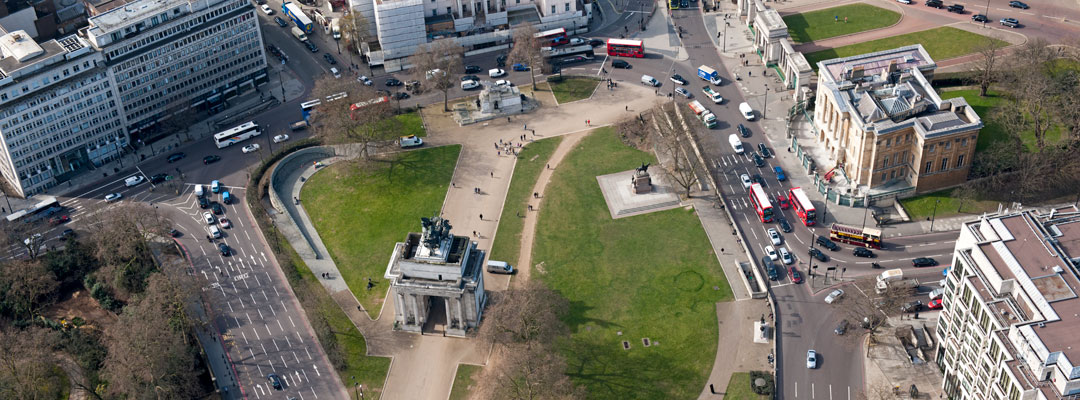Significance of Wellington Arch
Wellington Arch is one of London’s two triumphal arches, built in the period following the defeat of Napoleon at Waterloo in 1815, and is one of London’s most distinctive monuments.

A Neoclassical Triumphal Arch
Both Wellington Arch and Marble Arch were designed to form entrance gates to the newly built Buckingham Place, although both have since been relocated. They form part of the group of contemporary grand neoclassical building projects of the generation after the Battle of Waterloo, when Britain’s governing classes felt moved to embellish London to reflect the city and country’s wealth and international status. Regent Street, Regent’s Park, the National Gallery, Trafalgar Square and Buckingham Palace were among the results.
The Wellington Arch is a masterpiece of neoclassical design by Decimus Burton, a prominent and highly successful architect of the eclectic style of the age.
The Wellington Statue
The association of the arch with the Duke of Wellington, victor of Waterloo, whose London residence was the adjacent Apsley House, was confirmed in 1846 when it was crowned by Matthew Cotes Wyatt’s giant equestrian statue of the Iron Duke.
The controversy surrounding the erection of the statue, which was eventually removed in 1883, has been called ‘the greatest sculptural fiasco of the 19th century’.[1] It was one of the bitterest artistic debates in British history, and represents a major case study in British attitudes to public art.
The Quadriga
The arch has been crowned since 1912 with Adrian Jones’ quadriga, a masterpiece of British public sculpture from its Golden Age in the late 19th and early 20th centuries. Despite its lofty position, it is made with immense attention to detail and finish, by a sculptor with an unrivalled understanding of equine anatomy.
London’s Smallest Police Station
From its reconstruction in about 1886 until about 1960 the northern pier of the Wellington Arch was occupied by London’s smallest police station.
Footnote
1. J Physick, The Wellington Monument (London, 1970), 2.